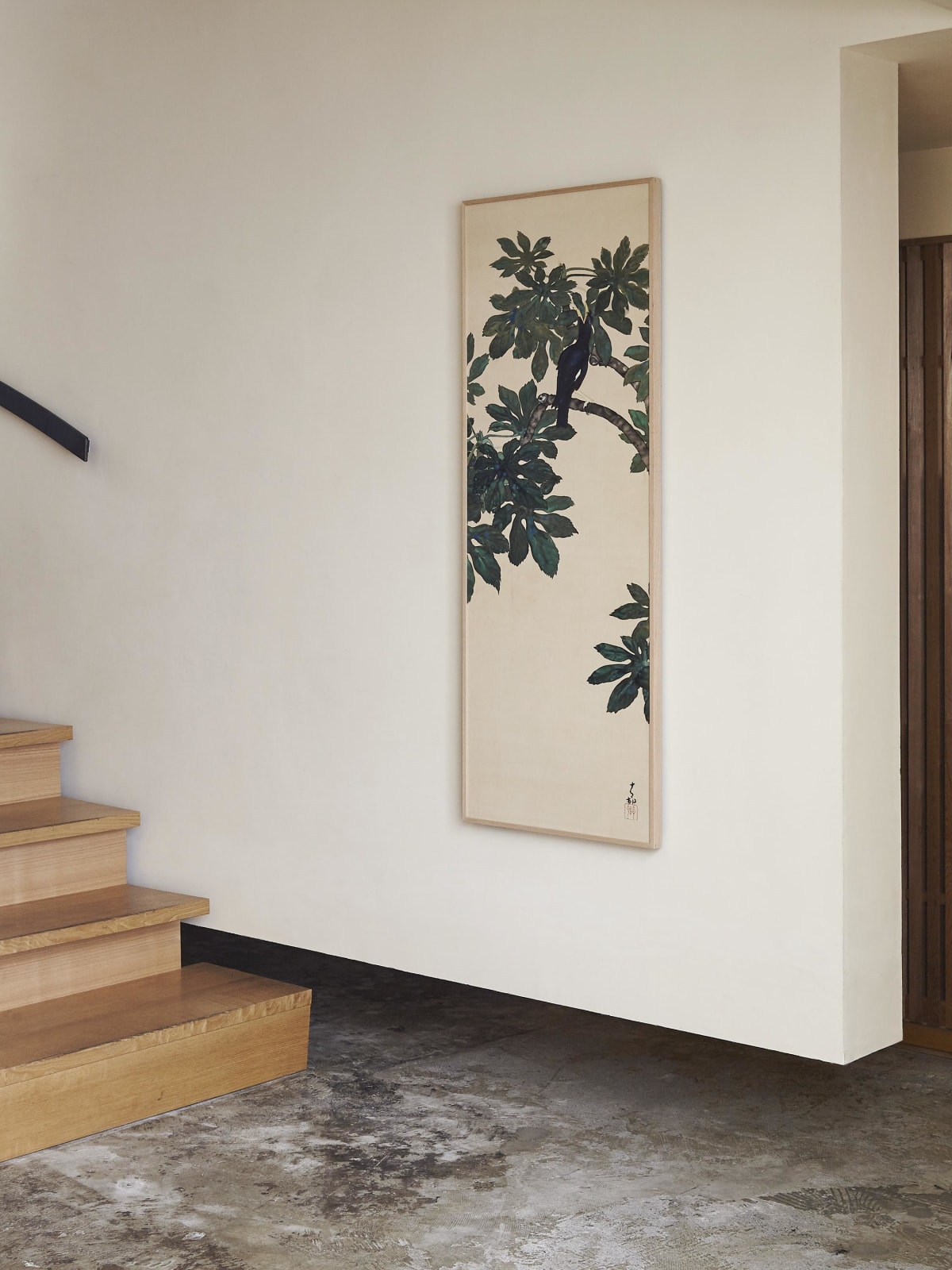Maeda Seison (1885−1977)
Japanese Aralia and Crested Myna
Color on silk, framed
With a box signed by the artist
Seal: Seison
133.4 x 49.5 cm
135.4 x 51.5 cm (overall)
Further images
Crested myna, also known as ‘kuyoku’ in Japan, is sometimes thought to be a imaginary bird and not included in bird guides in Japan. Also called ‘hakkacho,’ literally ‘bird of eight pitches,’ it is an unfamiliar bird to many. The bird is similar to starling that occurs in south Asia, and is an auspicious bird in China. It becomes widely known to the Japanese through Mu Qi’s Crested Myna in the Gotoh Museum collection, and is often painted by Yokoyama Taikan and Kawai Gyokudo. Taikan notably favored this motif and painted ten pieces ranging from naturalistic to symbolic depictions. In 1926, under the commission of Empress Teimei in memorial of Emperor Taisho upon his death, Taikan sketched the Imperial household’s crested myna reared in Shinjuku Gyoen imperial garden. Judging from this, the bird must have carried particular meanings for Taikan, which must have influenced the other Inten artists, including Maeda Seison.
In the present work, Seison paints a crested myna perched on a branch of Japanese Aralia depicted in tarashikomi technique in a vivid palette comparable to that of Western-style painting. The style and signature indicate that it was painted at Seison’s twenties in the 1910s. The bird is depicted singing towards the sky with its neck twisted, which might be a symbolic self portrait of Seison himself striving to reach the sky of nihonga.
Maeda Seison (nihonga painter; 1885–1977)
Gifu-born nihonga painter. His real name is Renzo. A student of Kajita Hanko. A member of nihonga societies Songa-kai and Koji-kai. Recognized as three exceptional painters at Inten (Japan Art Institute) together with Kobayashi Kokei and Yasuda Yukihiko. Particularly excelled at history, figure, and kacho (flower-and-bird) works. His work features refined lines and the tarashikomi (dripped in) technique. Member of Teikoku Bijutsuin (Imperial Fine Art Academy), an Imperial Court Artist, and a Nitten (Ministry of Education Art Exhibition) juror. Appointed Tokyo University of the Arts professor. Designated as a Person of Cultural Merit, and received the Order of Culture.
In the present work, Seison paints a crested myna perched on a branch of Japanese Aralia depicted in tarashikomi technique in a vivid palette comparable to that of Western-style painting. The style and signature indicate that it was painted at Seison’s twenties in the 1910s. The bird is depicted singing towards the sky with its neck twisted, which might be a symbolic self portrait of Seison himself striving to reach the sky of nihonga.
Maeda Seison (nihonga painter; 1885–1977)
Gifu-born nihonga painter. His real name is Renzo. A student of Kajita Hanko. A member of nihonga societies Songa-kai and Koji-kai. Recognized as three exceptional painters at Inten (Japan Art Institute) together with Kobayashi Kokei and Yasuda Yukihiko. Particularly excelled at history, figure, and kacho (flower-and-bird) works. His work features refined lines and the tarashikomi (dripped in) technique. Member of Teikoku Bijutsuin (Imperial Fine Art Academy), an Imperial Court Artist, and a Nitten (Ministry of Education Art Exhibition) juror. Appointed Tokyo University of the Arts professor. Designated as a Person of Cultural Merit, and received the Order of Culture.





